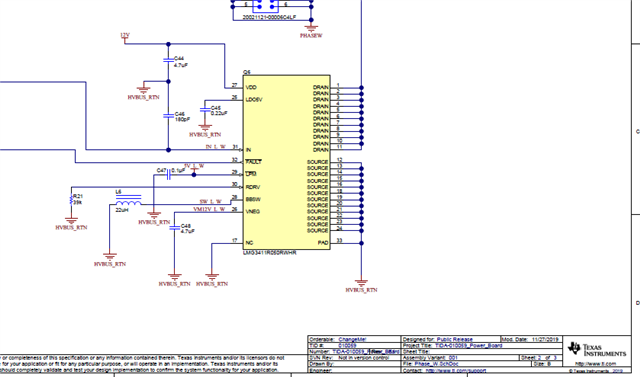Other Parts Discussed in Thread: LMG3411R050, LMG3411R150, TIDA-00915
Hi support team all.
I created a board using the Gerber data published in TIDA-010059.
A 3-phase BLDC is driven in an open loop with sinusoidal wave.
The rotation speed is very low.
I'm currently having a tough issue.
Fault signal is output only from the low side of LMG3411 used in half bridge.
Fault is not output on the high side.
Therefore, I do not think that the cause is that short through current is flowing.
When I monitored the low side LMG3411's VDD, VLDO5V, and VNEG, the waveforms were as shown below.
All power lanes are experiencing significant fluctuations. On the high side, this fluctuation does not occur much.
I think you may have a layout issue with this design.
Could you please help me guess the cause?


Best regards,
Higa

